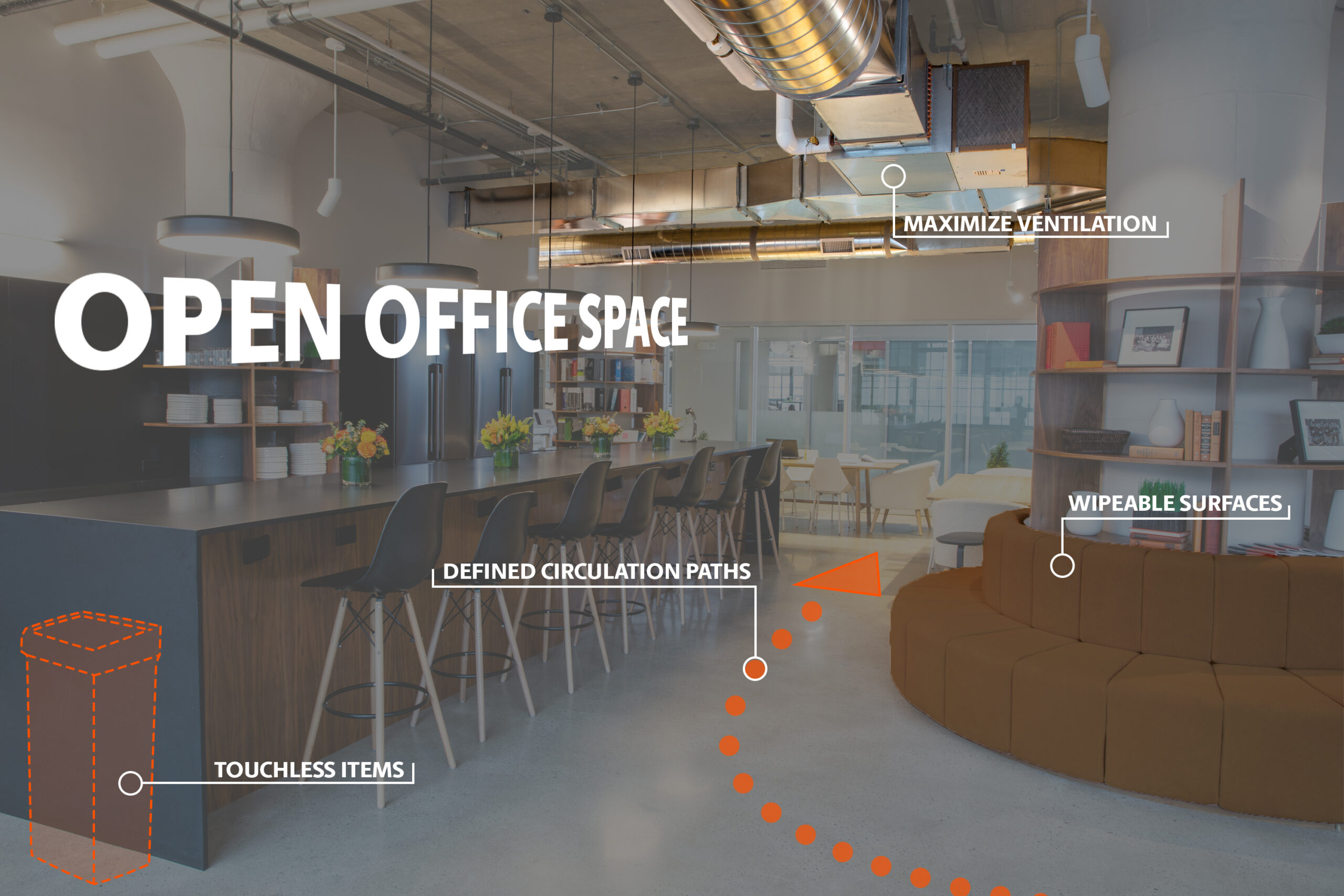This pandemic has surely changed the way of the world. It has also significantly impacted the way we work. So, what is to come for workplace design?
With the spread of COVID-19, a dramatic shift has taken place in the way we work and interact with our colleagues and clients. As we continue to learn more about the virus and methods of prevention, we look to the future to see what lessons can be drawn from this pandemic, and how our offices can be better prepared in the years to come. Even in a post-COVID-19 world, when temperatures start to drop and we enter cold and flu season, it will be more important than ever for employees not only to be safe from the spread of germs, but also FEEL safe in an office environment.
So, where is corporate interior design heading? Here are some of our top predictions:
Flexible design still reigns
The pandemic has shown us that companies benefit from remaining flexible and fluid in unprecedented times, both within the office space and when addressing unforeseen challenges. While established offices have quickly pivoted to implement social distancing and rigorous cleaning practices, future office spaces can rely on pre-meditated design choices to mitigate the risks of future viruses, from large-scale pandemics to the common flu. This will ultimately lead to safer, more agile environments where both employees and clients feel safe doing business.
Open office may get even more open
While at first glance, one might assume that open collaboration spaces would be less desirable in future designs to properly maintain social distancing, we believe the opposite to be the case. Enclosed areas may be phased out to support the introduction of an advanced open office, which prioritizes proper circulation and air filtration. An open space allows employees to remain socially distanced, rather than being confined to an enclosed office or meeting room. In addition, defined circulation paths let employees move throughout the space in a manner that promotes one-way travel, to limit close interaction, and circumvents encroaching on others’ workspaces. Obviously, with this true open office plan, challenges will be presented, such as noise considerations.
Bring fresh air into the space
As previously mentioned, air circulation is something that is now and will continue to be an important element of office design. This design development will lead to close collaboration between the architect and engineers, as we work to find the most efficient method to consistently reintroduce and circulate fresh air into the office.
Surfaces needs to be cleanable
As has already started to be the case, design will pivot to the use of materials that are easily cleaned, such as plexiglass and wipeable fabric. Even when this pandemic is over, we still see the cleanability of shared surfaces to be an important consideration of design.
Consider touchless items
Automated mechanisms will be integrated into the office design, with the proliferation of touchless technology for high-traffic objects such as trash cans, doors, and soap dispensers. The reduction of touchable shared surfaces will limit the spread of germs amongst staff and visitors, and lead to less clean-up overall.
Organized PPE
Just as there are personal protective equipment (PPE) stations in lab spaces, we envision such stations becoming more prevalent in offices to mitigate the risk of the spread of germs. These stations may even become an element of the design in the space, creating a functional yet elegant solution to distribute hand sanitizer, masks, and gloves. Cleanliness has always had its place in design, but we now see opportunities to expand the design with simple and cost-effective changes.
Our office spaces will adapt and evolve to best serve both business and employee needs. However, as it is difficult to foresee every challenge the future may hold, one thing remains certain: flexible and agile spaces that allow us to pivot with our changing needs will continue to be at the core of every design.



